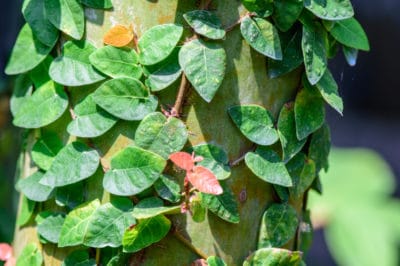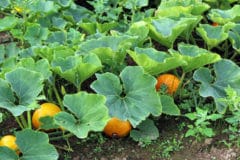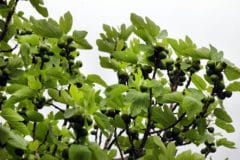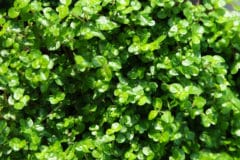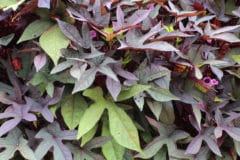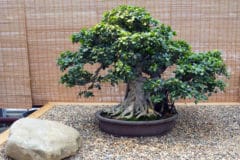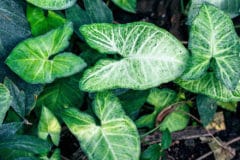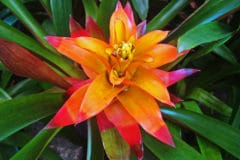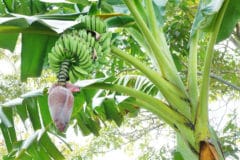What is Creeping Fig?
Creeping or climbing fig – Ficus pumila – is a member of the mulberry family. Pumilus is the Latin word for dwarf and refers to the small leaves. Juvenile foliage is much smaller than the mature leaves. Creeping fig is native to China, Japan and Vietnam. A woody evergreen vine, it may grow to 13 feet in length and climbs by means of tendrils.
Varieties of Creeping Fig
Several varieties of creeping fig are available. All can be used in similar landscaping situations. All are ficus pumila:
- ‘Curly’ – curly creeping fig; crinkled leaf form
- ‘Variegata’ and ‘Snowflake’ – variegated creeping fig; foliage edged with cream or white
- .Awkeotsang – awkeotsang creeping fig; produces edible fruits used in Asian cuisine.
- Quercifolia – oak leaf creeping fig; fingernail-sized three-lobed leaves.
Growing Creeping Fig
The creeping fig belongs to the same family as edible figs, giant banyan trees and rubber plants. Like its larger relatives, it prefers warmer climates and grows best outdoors in USDA Zones 8 through 11. However, it can also be grown as a container plant that is moved indoors for the winter or grown as a houseplant. Sometimes referred to as tropical ivy, it is used in similar situations.
The Right Soil
Give a creeping fig rich soil and it will take over in nothing flat. It is notable for its ability to grow in poor soil and is much easier to contain. If you are growing it in containers, standard potting soil is all you need. However, the plant should be repotted annually to keep it in good health. Don’t fertilize unless the plant looks pale or isn’t growing well.
Watering Creeping Fig
Creeping fig is very drought tolerant. In many areas it needs water to get established, but will then manage quite well with annual rainfall. Keeping it on the dry side is also a way to help contain the plant. For plants in containers, however, keep the soil on the moist side for best growth. Make sure the soil drains well to prevent root rot.
Pruning Creeping Fig
Creeping fig will attach itself to fences and walls with a gum-like adhesive that can damage surfaces. Unless you have plenty of room and need it for a ground cover in rough areas, creeping fig must be pruned at least once and usually twice a year. This is particularly important for topiary, as it means lots of the smaller and more attractive immature leaves.
